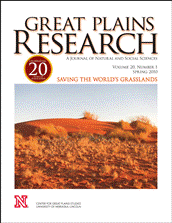Ver ítem
- xmlui.general.dspace_homeCentros Regionales y EEAsCentro Regional Santa FeEEA OliverosArtículos científicosxmlui.ArtifactBrowser.ItemViewer.trail
- Inicio
- Centros Regionales y EEAs
- Centro Regional Santa Fe
- EEA Oliveros
- Artículos científicos
- Ver ítem
Evaluating a hybrid soil temperature model in a corn-soybean agroecosystem and a tallgrass prairie in the Great plains
Resumen
Simulation models of soil-related biological processes usually require soil temperature data. Frequently these soil temperatures are simulated, and the soil temperature algorithms cannot be more complicated than the original process model. This situation has led to the use of semi-empirical-type relationships in these process models. The objective of this study was to evaluate a hybrid soil temperature model, which combines empirical and mechanistic
[ver mas...]
Simulation models of soil-related biological processes usually require soil temperature data. Frequently these soil temperatures are simulated, and the soil temperature algorithms cannot be more complicated than the original process model. This situation has led to the use of semi-empirical-type relationships in these process models. The objective of this study was to evaluate a hybrid soil temperature model, which combines empirical and mechanistic approaches, in an agroecosystem and a tallgrass prairie in the Great Plains. The original hybrid soil temperature model was developed and verified for a temperate forest system. This model simulated soil temperatures on a daily basis from meteorological inputs (maximum and minimum air temperatures) and soil and plant properties. This model was modified using different extinction coefficients for the plant canopy and ground litter. The agroecosystem consisted of a no-till rotation system of corn (Zea mays L.) and soybeans (Glycine max [L.] Merr.). Soil temperatures were measured at different depths in multiple years (three years and two-and-a-half years in the agroecosystem and tallgrass prairie, respectively). In the agroecosystem, the root mean square error of the modified model simulation varied from 1.41º to 2.05ºC for the four depths (0.1, 0.2, 0.3, and 0.5 m). The mean absolute error varied from 1.06º to 1.53ºC. The root mean square error and mean absolute error of the modified model were about 0.1º–0.3ºC less than the original model at the 0.2–0.5 m depths. For the tallgrass prairie, the mean absolute errors of the simulated soil temperatures were slightly greater than the agroecosystem, varying from 1.48º to 1.7ºC for all years and from 1.09º to 1.37ºC during the active growing seasons for all years.
[Cerrar]

Autor
Song, Feng;
Salvagiotti, Fernando;
Schmer, M.R.;
Wingeyer, Ana Beatriz;
Weiss, Albert;
Fuente
Great Plains Research 20 (2) : 249–260 (2010)
Fecha
2010
Editorial
University of Nebraska Press
ISSN
1052-5165
Formato
pdf
Tipo de documento
artículo
Palabras Claves
Derechos de acceso
Abierto
 Excepto donde se diga explicitamente, este item se publica bajo la siguiente descripción: Creative Commons Attribution-NonCommercial-ShareAlike 2.5 Unported (CC BY-NC-SA 2.5)
Excepto donde se diga explicitamente, este item se publica bajo la siguiente descripción: Creative Commons Attribution-NonCommercial-ShareAlike 2.5 Unported (CC BY-NC-SA 2.5)


